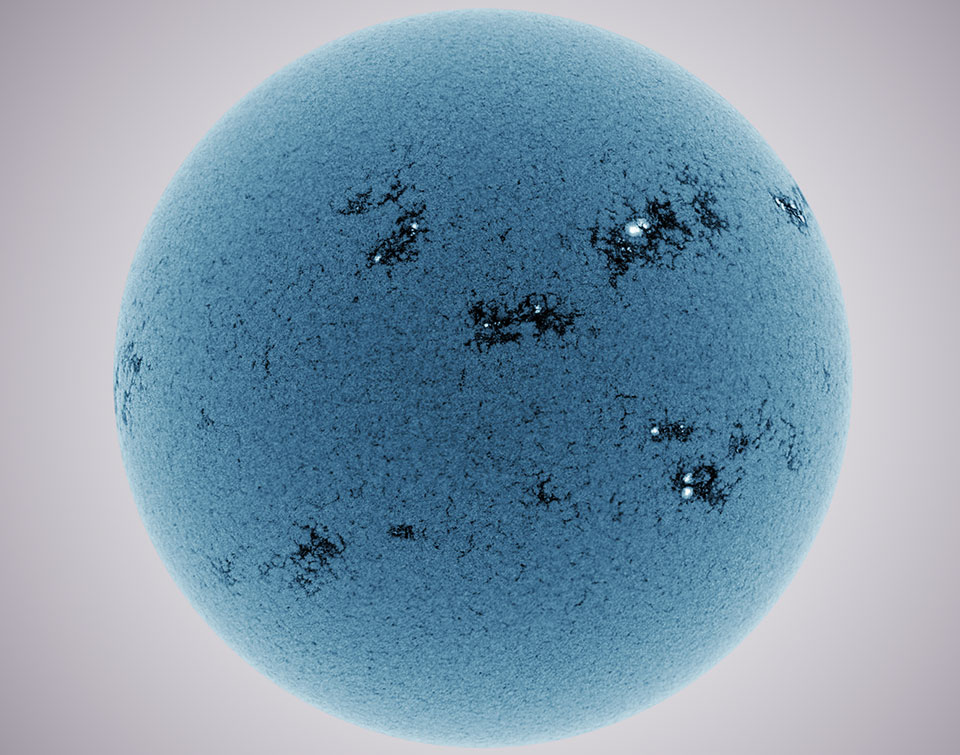
An amateur astronomer has taken an artistic approach to his backyard stargazing with stunning success as seen in this beautiful image of the sun.
Veteran solar photographer Alan Friedman captured this image from Buffalo, N.Y., on May 14 with a 90mm Coronado CaK telescope and a PGR Grasshopper Express 6 megapixel camera.
Friedman used his equipment to capture a specific wavelength of extreme violet light called CaK in this image to makes the sun appear to look intensely blue. CaK is emitted by ionized Calcium in the sun's atmosphere. Friedman then false color-inverts the image. The work shows a unique view of the sun's surface highlighting the texture, bright sunspots, and hot active regions that appear dark.
"After dodging clouds and hailstorms all week I was able to record my first solar image at the CaK wavelength … 393.37nm in the violet end of the spectrum," Friedman wrote on his website.
"I see almost no detail visually due to my eye's poor sensitivity at this wavelength. But the camera sees good."
Warning: Never look directly at the sun through binoculars, telescopes or with your unaided eye. Severe eye damage, and even blindness, can result. Astronomers use special filters to safely observe the sun and protective glasses are required for solar eclipse viewing.
Editor's note: If you have an amazing night sky photo you'd like to share for a possible story or image gallery, please contact managing editor Tariq Malik at spacephotos@space.com.
Breaking space news, the latest updates on rocket launches, skywatching events and more!
Follow SPACE.com on Twitter @Spacedotcom. We're also on Facebook & Google+.
Nina Sen is a freelance writer and producer who covered night sky photography and astronomy for Space.com. She began writing and producing content for Space.com in 2011 with a focus on story and image production, as well as amazing space photos captured by NASA telescopes and other missions. Her work also includes coverage of amazing images by astrophotographers that showcase the night sky's beauty.
